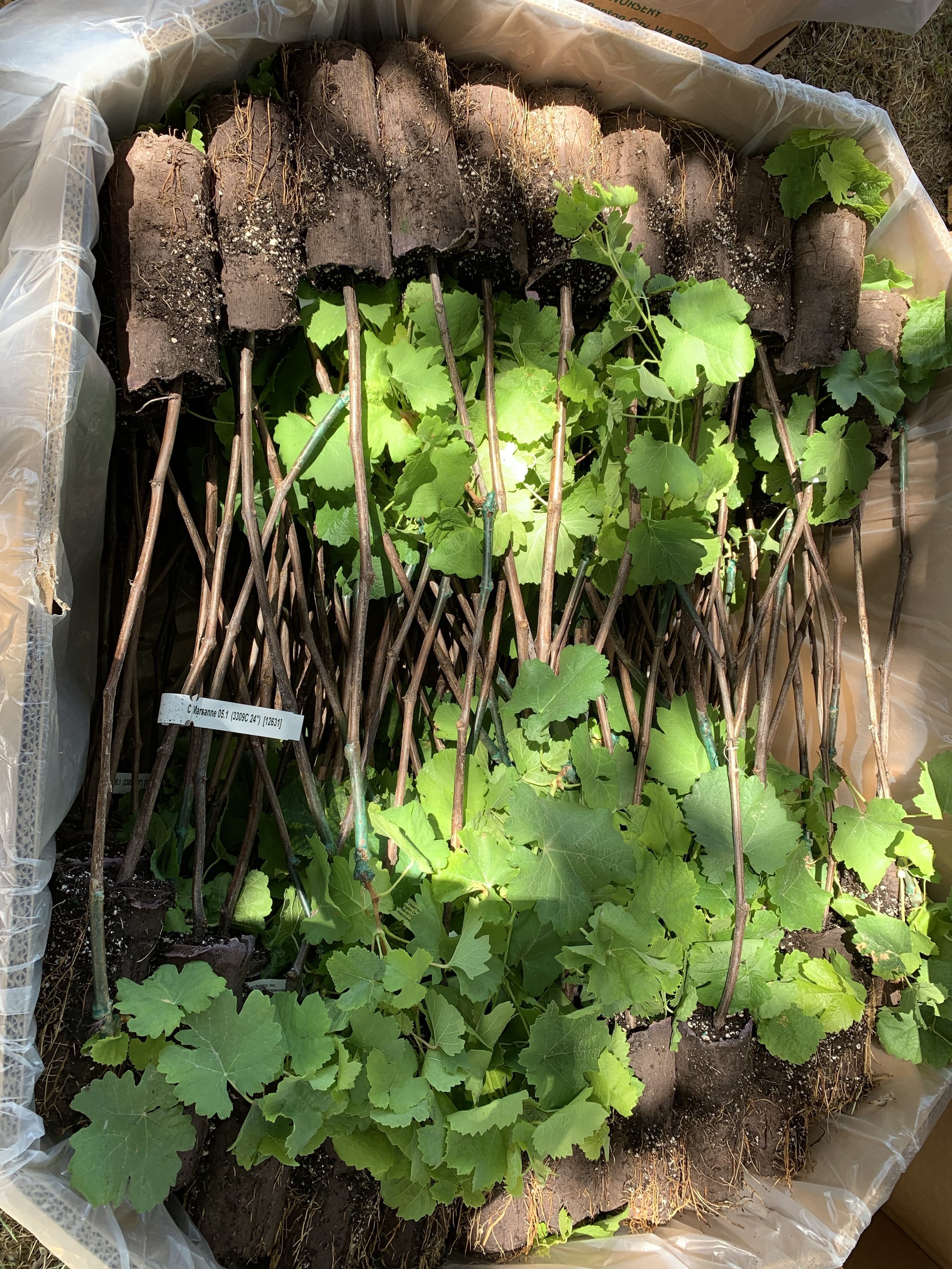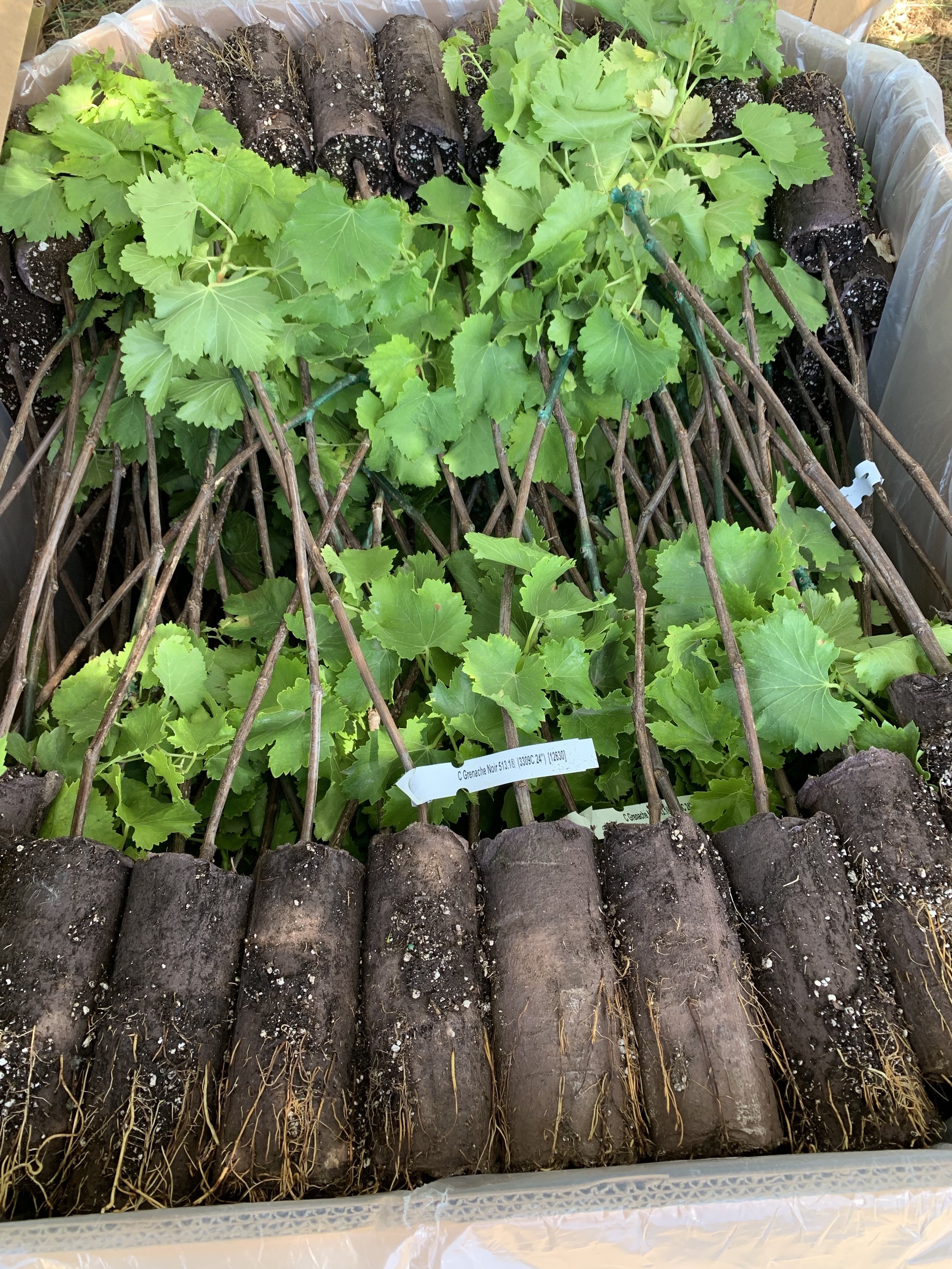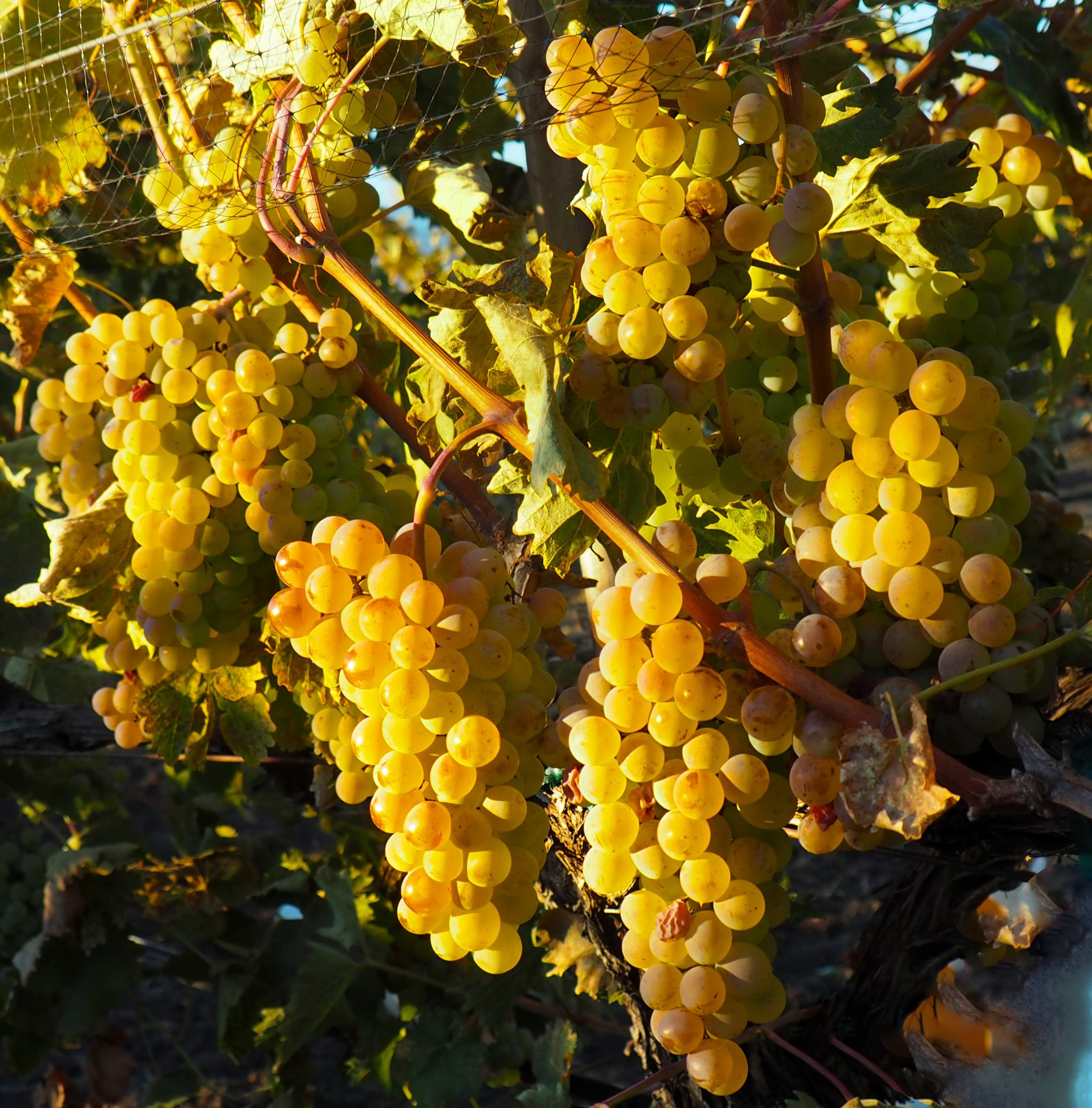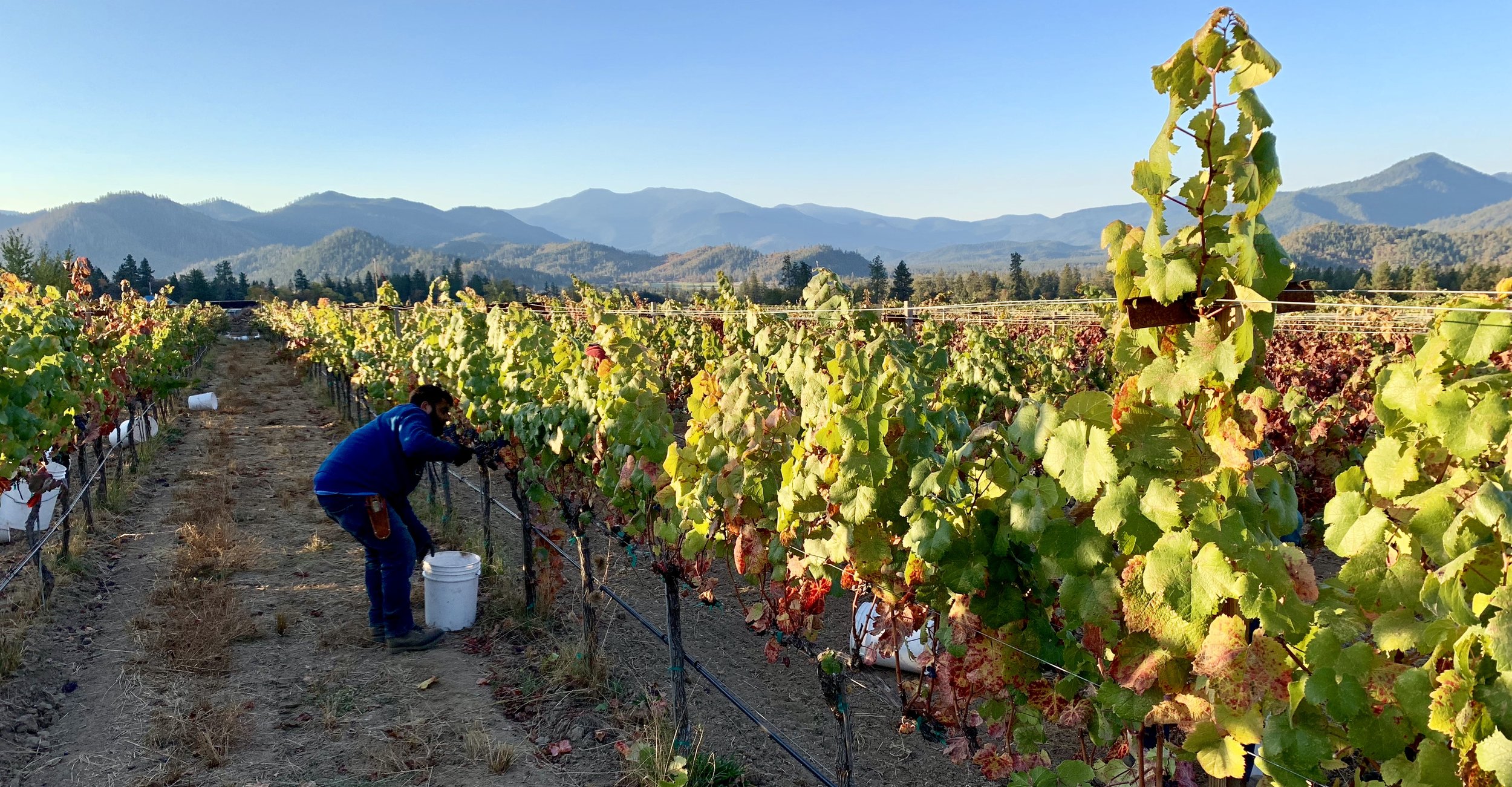Three Bubbles
A trio of bubbles. That's what we are now releasing at Troon Vineyard from the 2020 vintage. Each is distinct. An essential tenet of biodynamics is intentionality, and each of these méthode ancestrale wines was conceived with intention.
While each of these wines are different styles, they are all pétillant naturel wines. As with everything we do at Troon, it all starts with farming. The foundation of the intentional winemaker. You have to visualize what you want to accomplish and then farm the vines with that vision in mind.
We selected the blocks for these wines before bud break, and every choice made during the vintage was based on making sparkling wines. All of these wines were made from our older blocks, which suffer from the red blotch virus. This virus slows the ripening process, which not a bad thing when making sparkling wine. This enabled us to pick grapes with high acidity and lower sugar, but with rich flavors. All of these vines will soon be replaced as part of our replanting program, but everything we have learned in making wine from them will allow us to build and improve on our sparkling wines moving forward. In the future, what will they be made from? We'll let you know, but watch for sparkling wines made from grenache blanc, picpoul, and clairette blanche.
Within hours of harvesting the fruit for the Piquette! and Pét tanNat are whole-cluster pressed into stainless steel tanks, while the grape bunches for the FIZZante are loaded into a stainless steel tank for whole-cluster fermentation. After that, the process is more or less the same for all three wines. The wines are slowly fermented with native yeasts. Then comes the tricky part — all happening during the mêlée of harvest. The sugar levels are checked daily; when making pétillant naturel wines, you have to bottle at precisely the right moment when there is just enough sugar left in the wine to finish fermentation in the bottle and produce just the right amount of sparkle. As the wines are actively fermenting, when the moment is right, you have to drop everything and get the wines in the bottle — non-stop — so that the first bottle has the same amount of sugar as the last bottle. Then they finish fermentation in bottles over the winter.
While fun may have been the inspiration for these wines and is undoubtedly the reason to enjoy them, these light-hearted wines are a lot of work to make. Once the process begins, everything is in motion until the wines are bottled. Then these wines are all hand-bottled, a slow and physically demanding process. But when they are finished, and we open the first bottles, it is always a celebration — these are bubbles after all!
We call this charming, fruity, yet dry sparkling wine “frugal farmer fizz” as it’s crafted from the pomace of our white and rosé wines. Those frugal farmers wasted nothing and used the juice and skins left after pressing the wines they would sell to make wine for themselves and their workers. Our piquette’s mélange of varieties changes vintage-to-vintage, but our vision for the style of this unpretentious naturally bottle-fermented wine never varies. After pressing our estate white and rosé wines, there is still substantial juice left in skins as we press very gently. To that, we add a touch of water, then let it macerate overnight in the press. The next day, we press that juice into a stainless steel tank, where begins a native yeast fermentation. The resulting sparkling wine is a delight. Fresh and fizzy with bright fruit flavors. Our 2020 Piquette! is not disgorged and has no added sulfur.
Pét tanNat is a distinctive pét nat crafted exclusively from our Estate Tannat, this naturally bottle-fermented sparkling wine is made in the ultra-brut style — the driest of the dry. Richly flavored and complex with just that touch of rustic, authentic charm that defines pétillant natural. Tannat grown in our Applegate Valley vineyard has very low pH, which means high acidity — just what you want for sparkling wine. This was our second year making this wine, and we let it get a bit riper than last year as there was more than enough acidity, and we wanted a more richly flavored wine. When making the first vintage, we thought the wine would be pink, but as you see, the wine has the copper tinge of some blanc de noir Champagne. Unlike our other sparkling wines, we believe there is potential for development in the bottle over the next several years. Our 2020 Pét tanNat is disgorged and finished with a sulfur level below 15 ppm.
For many years one of my favorite food and wine pairings has been Lambrusco Secco and pizza. We were inspired by those vivacious red sparkling wines of central Italy when we created FIZZante. FIZZante combines explosive dark red fruit flavors with a lifting effervescence to produce an exceptionally refreshing naturally bottle-fermented dry sparkling wine. For this wine, we chose a block of sangiovese and montepulciano, and whole-cluster fermented them together. This was our last vintage from these varieties, as that block will be replanted this month. While you may think we chose these varieties because of their Italian heritage, that was not the case. We chose these varieties for their acidity and freshness. We will continue making this wine in the future, but the varieties could be carignan, counoise, and cinsault as our first plantings of those varieties come into production this year. Try FIZZante with your favorite pizza to create a new life-long obsession. Our 2020 FIZZante is disgorged and finished with a sulfur level below 15 ppm.





































